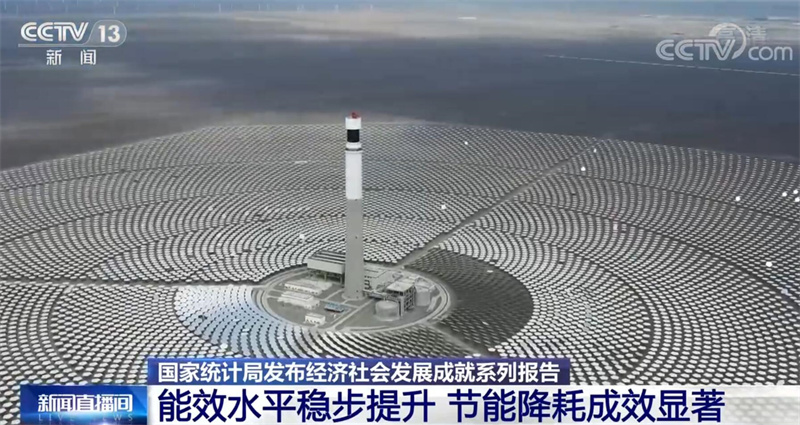National Bureau of Statistics: China’s energy efficiency level has been steadily improved, and remarkable results have been achieved in energy conservation and consumption reduction.
CCTV News:The National Bureau of Statistics announced today (October 8) that since the 18th National Congress of the Communist Party of China, the structural reform of China’s energy supply side has been continuously promoted, the pace of energy green and low-carbon transformation has been accelerated, the level of energy efficiency has been steadily improved, remarkable results have been achieved in energy conservation and consumption reduction, and new progress has been made in the energy industry.
In 2021, China’s power generation was 8.5 trillion kWh, an increase of 71.1% over 2012, with an average annual increase of 6.1%. Wind power, solar energy and other new energy sources increased by 6.8 times, with an average annual growth rate of 25.7%, accounting for 11.5% of the total power generation, an increase of 9.0 percentage points over 2012.

In 2021, the installed capacity of non-fossil energy power generation in China surpassed that of coal-fired power generation for the first time, with an installed capacity of 1.12 billion kilowatts, accounting for 47.0% of the total installed capacity of power generation. The installed capacity of hydropower, wind power and solar power all exceeded 300 million kilowatts, ranking first in the world for many years in a row.

In 2021, the proportion of coal in China’s total energy consumption decreased from 68.5% in 2012 to 56.0%, a decrease of 12.5 percentage points. The proportion of clean energy such as natural gas, hydropower, nuclear power and new energy power generation has increased significantly, and the proportion of natural gas has increased from 4.8% to 8.9%, an increase of 4.1 percentage points; The proportion of primary electricity and other energy sources increased from 9.7% to 16.6%, an increase of 6.9 percentage points.

In 2021, China’s energy consumption per unit GDP decreased by 26.4% compared with that in 2012, with an average annual decrease of 3.3%, which is equivalent to saving and using about 1.4 billion tons of standard coal. Among them, the energy consumption per unit added value of industrial enterprises above designated size decreased by 36.2%, with an average annual decrease of 4.9%, which was 9.8 percentage points and 1.6 percentage points higher than the cumulative and average annual decrease of energy consumption per unit GDP, respectively, and the industrial energy saving effect was obvious.